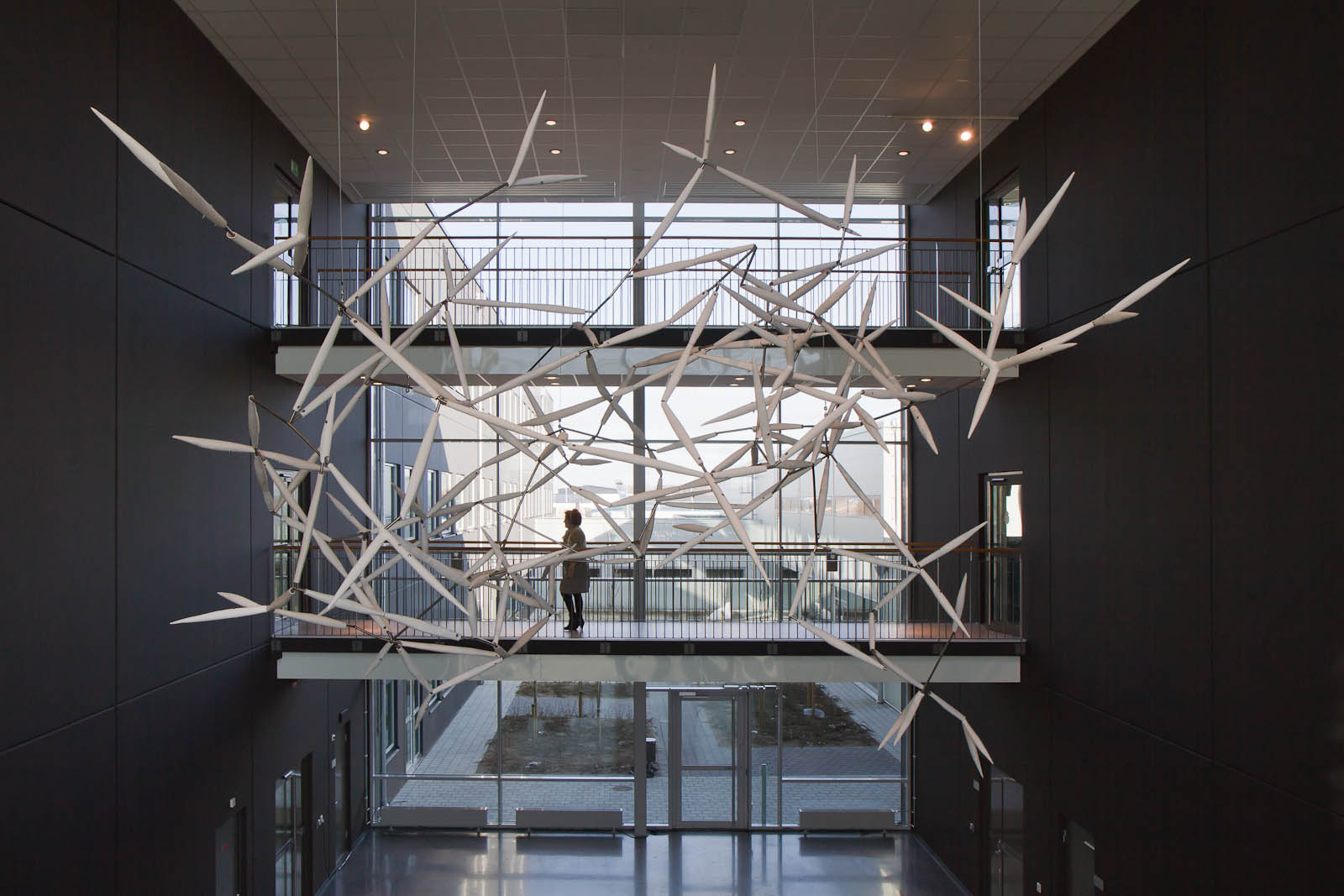Public art may appear in any expression or technique. Permanent art is often created for a specific site and can be anything from a mosaic on a wall to a sculpture on a public square and everything in between. Here we describe the work process that leads to a permanent artwork.

Permanent art is often called “building-related”, “property-related” or “fully integrated” art. This is because the artwork forms part of a building or property. This applies regardless of whether the artwork is a sculpture on a platform or integrated into its environment to the extent that it cannot be removed without changing both the artwork and the site. Permanent art is often created specifically for its site. This makes it unique and perhaps different from how we have become accustomed to view art in the latter part of the 20th century. For example, a public artwork can be the paved surface on a public square, a sculpture that winds its way through several stories of a building, a film or a sound piece that is not visible. In brief: Public art may appear in any of the forms and expressions available in historical and contemporary art.
Permanent Art: A Long History
Artists, often in collaboration with architects and other artistic practitioners, have worked with permanent, building-related art for centuries. This has resulted in some of Sweden’s and the world’s most important cultural heritage. The earliest examples of images that cannot be removed from their environment are the 44,000-year-old cave paintings, produced long before the creation of our contemporary concepts of art and architecture. History has led to tradition-bound methods that still form part of some of Public Art Agency Sweden’s various work processes. They are also used in many of Sweden’s municipalities and regions.
The Work Process Very Briefly
The work process has to be regarded as a theme with variations – not as a fixed model. Depending on, for example, the artwork’s dimensions, complexity, timetable, expectations, etc, the work process is adapted, developed and consolidated to meet each project’s specific requirements.
The simplest form of the work process for a permanent artwork begins with a preparatory phase. This is followed by the appointment of an art project manager – a curator, artist or an art consultant – who will appoint an advisory group and formulate an art programme for the project. When the preliminary budget has been decided, one or more artists will be invited to participate in a sketch assignment. Artists may be invited or procured by open calls, invitational competitions or open competitions. To provide sufficient time for the artist to understand the project and be brought up to date with commissioners and architects, the sketching period should not be shorter than three months.
When the sketching period is completed, the sketch will be evaluated and a decision will be made whether the artwork should be produced or not. If the sketch is approved, the artwork should be produced with the commissioning institution’s project leader or the artist as its producer. Finally, the artwork is inspected and inaugurated.
The Several Stages of an In-depth Work Process
Public art projects are commonly developed gradually in various stages, as one or more phases of the process are carried out in depth. The artist’s work may, for example, begin with a preliminary study phase, followed by one or more in-depth preliminary study phases. The sketching process may be divided into several phases of concept development, sketching assignments or in-depth sketching assignments. The advantage of this being that the process can be kept open for a long time. For example, if the art programme provides ideas for possible sites for the artistic work, they can be further defined if the artist who has been commissioned to create the artwork can contribute to the decision. An open process also increases the possibilities for the artist to develop their own artistic process in a new direction, which, in constructive ways, may propel the project into new directions that were not initially explored. There will be more check-up points and it may take longer, but, in a best case scenario, this time will be saved towards the end of the project, the result of which will be of a superior quality with increased sustainability, also in regard to the management and maintenance of the art.
A Dynamic Process
Instead of thinking of the process as linear it may be fruitful to regard it as a dynamic and interactive flow in which the artistic ideas, open to changing circumstances, are tested and developed in various ways. This increases the possibilities for artists and other professional groups to enter into respectful dialogue with each other, with the objective of further developing the project. This, in turn, makes it more likely that the artistic project, the architecture and the landscape design together may achieve a well-designed living environment in which existing social and cultural values are preserved and new values created.
Leave the Door Open for Surprises
One of the most enjoyable and exciting parts of working with public art is that, from the beginning, no one knows what the end result will be. Not the commissioner, not the advisory group, not the art project manager, not even the artist. However, what everyone knows when the process begins is that the outcome will be an artwork that no one will ever be able to replicate. It has a unique value that exists in one particular building or in one specific place in the world.
Success Factors for Working with Permanent Public Art
- Proceed from the art programme
- Keep the process open as long as possible
- Welcome the unexpected
- Trust the artist’s creative process
- Keep the discussion going throughout the process
- Anchor the process with all involved parties
- Address conflicts when, or if, they arise
- Patience pays off
- Trust and open-mindedness go a long way
- Think through how to communicate the art project: internally, externally and strategically